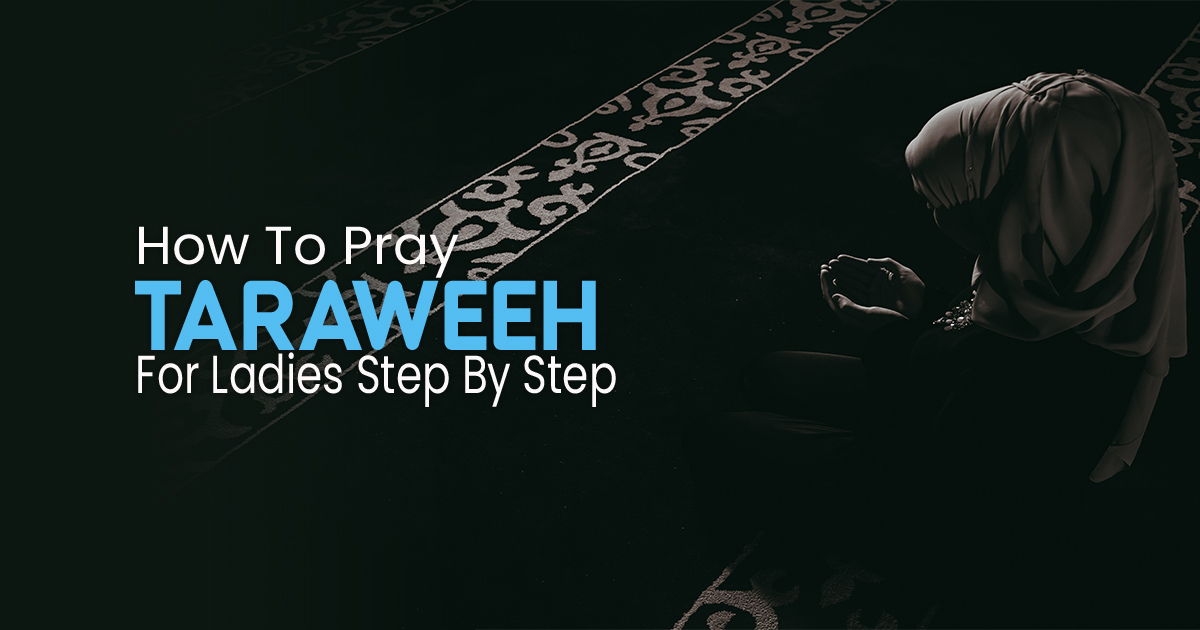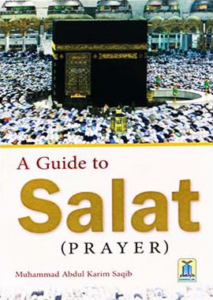As the blessed month of Ramadan approaches, Muslims worldwide eagerly anticipate the opportunity to engage in acts of worship, seeking spiritual growth and closeness to Allah. Among the cherished rituals of Ramadan is the Taraweeh prayer, performed after the obligatory night prayer, Isha. While traditionally performed in congregation at the mosque, women may choose to pray Taraweeh at home due to various reasons.
Taraweeh for Ladies Step by Step
In this comprehensive blog by Darussalam, we will walk you through the step-by-step process of praying Taraweeh for ladies at home.
Step 1: Intention (Niyyah)
Before commencing Taraweeh prayers, it’s essential to make a sincere intention in your heart, solely for the sake of Allah. The intention should be made silently within yourself, focusing on the spiritual significance of the prayers.
- Make a sincere intention to perform Taraweeh prayers for the sake of Allah.
- Formulate the intention silently within your heart.
- Focus on the spiritual significance and sincerity of the intention.
Step 2: Establishing the Place of Prayer
Choose a suitable area within your home where you can perform Taraweeh prayers comfortably without distractions. Ensure the space is clean, well-lit, and conducive to prayer.
- Choose a quiet and clean area within your home for Taraweeh prayers.
- Ensure the space is well-lit and free from distractions.
- Arrange prayer mats or rugs for comfort and cleanliness.
Step 3: Taraweeh Timing for Ladies
Taraweeh prayers are performed after the obligatory Isha prayer and can be offered throughout the night until the break of dawn. It’s recommended to perform Taraweeh prayers in the early part of the night to avoid tiredness.
- Perform Taraweeh prayers after the obligatory Isha prayer.
- Aim to begin the prayers in the early part of the night to avoid fatigue.
- Taraweeh prayers can be offered throughout the night until the break of dawn.
Learn More: Beauty of Taraweeh for Ladies
Step 4: Number of Rak’ahs in Taraweeh for Women
The number of rak’ahs in Taraweeh prayers varies among different Islamic traditions, with common options being 8, 12, or 20 rak’ahs. Choose the number of rak’ahs based on personal capacity and convenience.
- Decide on the number of rak’ahs based on personal capacity and convenience.
- According to Islamic traditions, common options include 8, 12, or 20 rak’ahs.
- Choose a number that allows you to maintain concentration and devotion throughout the prayers.
Step 5: Recitation
During Taraweeh prayers, recite Surah Al-Fatiha (the Opening Chapter of the Quran) and another surah of your choice in each rak’ah. Aim to recite with proper Tajweed (correct pronunciation) and reflect on the meaning of the verses.
- Recite Surah Al-Fatiha and another surah of your choice in each rak’ah.
- Focus on proper Tajweed (correct pronunciation) and reflect on the meanings of the verses.
- Begin with longer surahs and gradually move to shorter ones as the prayer progresses.
Step 6: Standing (Qiyam)
Maintain a straight posture with hands folded over the chest while reciting Quranic verses during Taraweeh prayers. Ensure humility and focus throughout the standing position.
- Stand with a straight back, facing the direction of the qiblah (the direction of the Kaaba in Mecca).
- Find a comfortable stance with feet shoulder-width apart, distributing weight evenly.
- Maintain focus on the recitation of Quranic verses, while keeping the hands folded over the chest or at the sides in a relaxed manner.
Step 7: Bowing (Ruku’) in Taraweeh for Ladies
Bow down with the back straight and hands resting on the knees, saying “Subhana Rabbiyal Adheem” (Glory is to my Lord, the Most Great). Maintain proper balance and tranquility in the bowing position.
- Keep the back straight and bend at the waist, with hands resting on the knees.
- Remember to maintain a moderate posture, avoiding excessive bending or strain on the back.
- Ensure a smooth transition from the standing to the bowing position, symbolizing humility and devotion.
Step 8: Prostration (Sujood)
During prostration, place the forehead, nose, palms, both knees and all toes on the ground. Say “Subhana Rabbiyal A’la” (Glory is to my Lord, the Most High) while in the prostration position.
- Ensure proper posture and alignment during prostration.
- Keep the forehead and nose firmly on the ground.
- Maintain tranquility and focus on supplication while in prostration.
Step 9: Sitting (Jalsa) and Prostration (Sujood)
Conclude each set of two rak’ahs with the Tashahhud (testimony of faith) and salutations upon the Prophet Muhammad (peace be upon him). Use this moment to make personal supplications and seek blessings from Allah.
- Recite the Tashahhud with humility and devotion.
- Offer salutations upon the Prophet Muhammad (peace be upon him) with sincerity.
- Engage in personal supplications and seek blessings during this concluding phase.
Step 10: Completion of Rak’ah and Tashahhud
- Explores the stages of spiritual development and challenges faced.
- Offers practical guidance for navigating life’s trials.
- Provides insights into achieving spiritual maturity and enlightenment.
Step 11: Tasleem in Taraweeh for Women
End the Taraweeh prayer by turning the head to the right and saying “Assalamu Alaykum wa Rahmatullah” (Peace and mercy of Allah be upon you) to end the prayer. Repeat the salutation to the left, completing the Tasleem and signaling the end of the prayer.
- Ensure clarity and audibility in pronouncing the Tasleem.
- Complete the Tasleem by turning the head to both sides.
- Maintain a sense of tranquility and gratitude upon completing the Taraweeh prayer.
Read More: How to Prepare for Taraweeh in Ramadan
Conclusion:
Praying Taraweeh for ladies is a deeply rewarding practice during Ramadan. By following the step-by-step guide outlined here, women can engage in Taraweeh prayers with sincerity and devotion. Through each rak’ah, they have the opportunity to connect with Allah and seek spiritual growth. Let us embrace this sacred act of worship with humility and dedication, seeking forgiveness and blessings during this blessed month and beyond.
FAQs About How to Pray Taraweeh for Ladies Step by Step:
Can women lead Taraweeh prayers at home?
Yes, women can lead Taraweeh prayers at home for themselves and other women within their family or gathering.
Can Taraweeh be prayed individually or is congregation necessary?
Taraweeh can be prayed individually or in congregation. While congregation holds greater reward, praying individually is also permissible and carries immense spiritual benefits.
Is it necessary to recite the entire Quran during Taraweeh prayers?
No, it’s not obligatory to recite the entire Quran during Taraweeh prayers. Recite portions of the Quran that you are comfortable with, focusing on quality rather than quantity.













